What’s remarkable about these unique and distinctive bags is that they have the potential to bring about a more sustainable fashion trend. Experimenting with new styles and new manufacturing procedurs, product designers behind them try to make one of the most wasteful industries a little more eco-conscious.
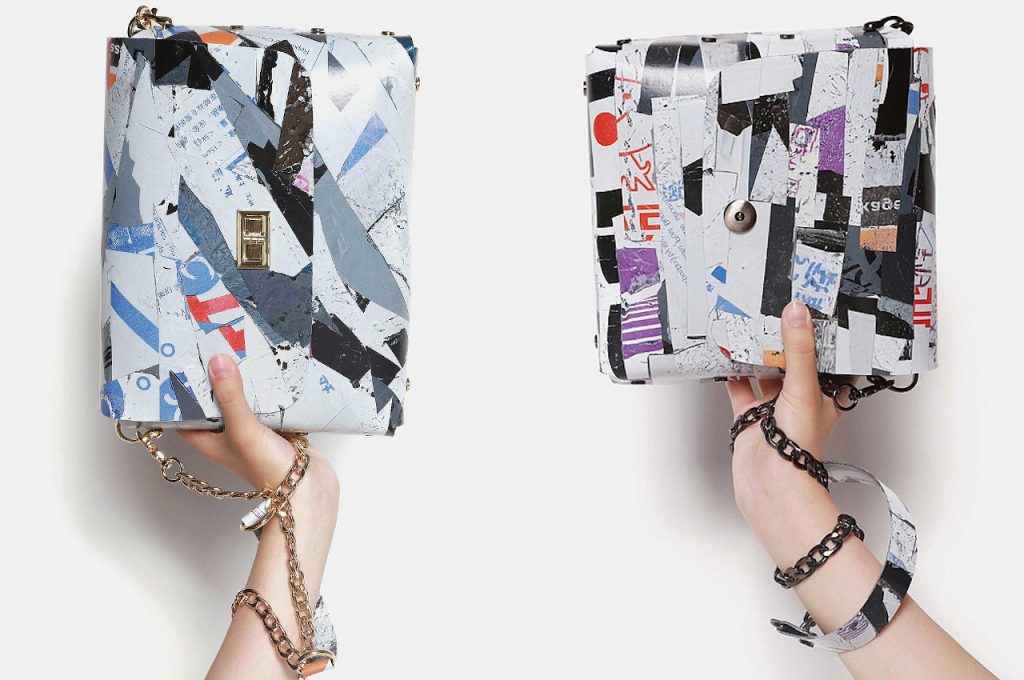
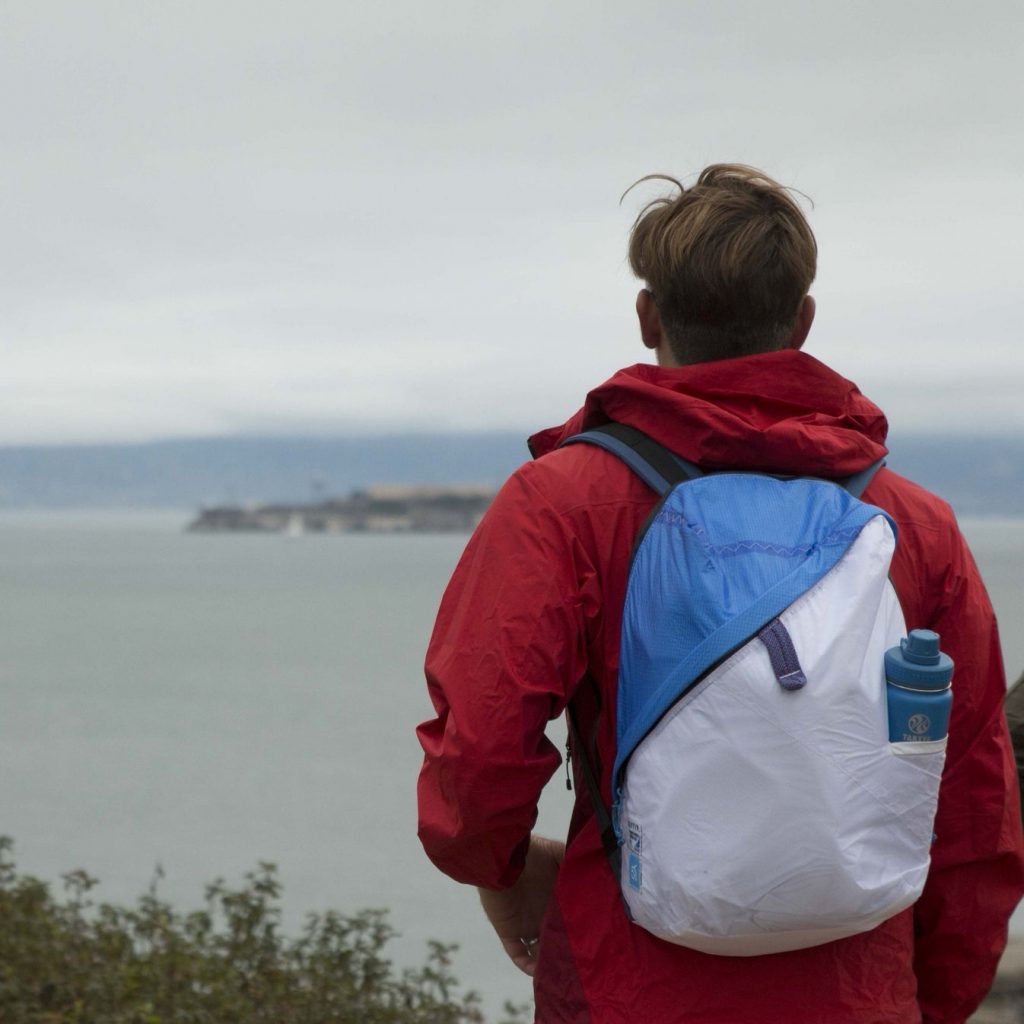
Deep Blue Bag by Yves Behar for MAFIA
Swiss designer Yves Behar, who is an advisory board member of non-profit Sustainable Surf, has collaborated with a San Francisco based sustainable bag company MAFIA to create a backpack made from recycled sails and discarded kiteboarding gear. The Deep Blue Bag project aims to raise money to support Sustainable Surf’s award winning program that enables healthier oceans as well as raise awareness about protecting the ocean.
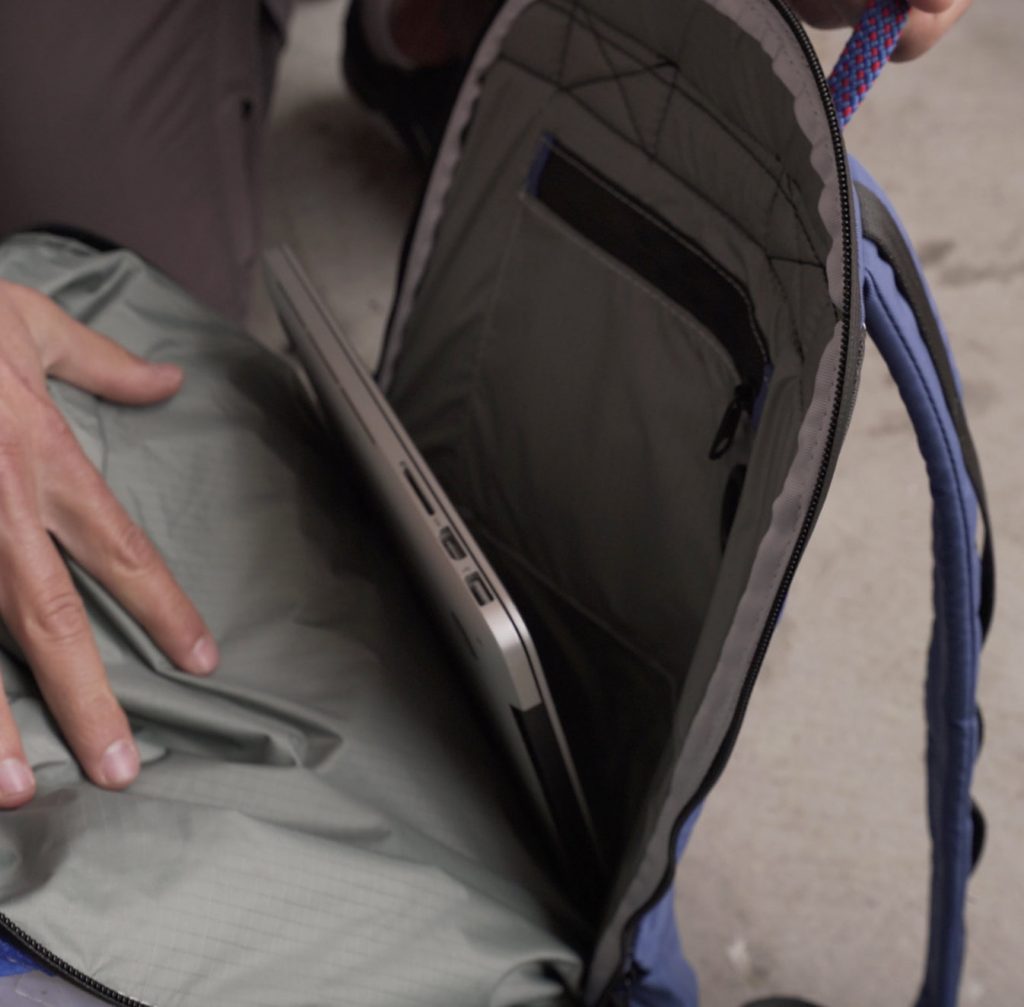
Deep Blue Bag by Yves Behar for MAFIA
A main feature of the design is a water-resistant pocket that can be used for wetsuits and gym gear without getting the rest of the contents wet. The backpack includes a bottom loop for easy hang drying, waterproof zippers, and a secret stash pocket for keys, wallet, passport, and other valuables.
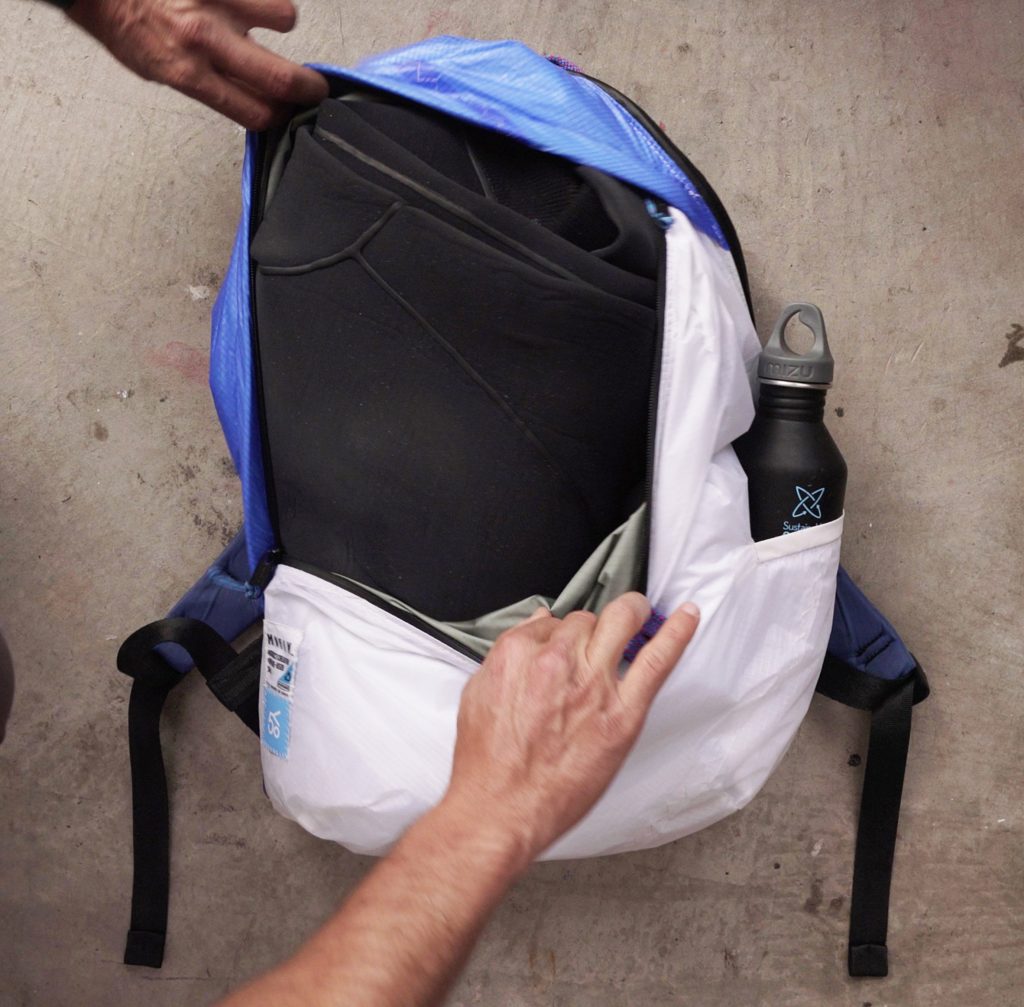
Deep Blue Bag by Yves Behar for MAFIA
Each bag is uniquely designed with special attention and features one of a kind characteristics of upcycled sails. No two bags are the same, as they vary slightly in original stitching of sails, zipper pulls rope color (repurposed kite lines) and other color accents.
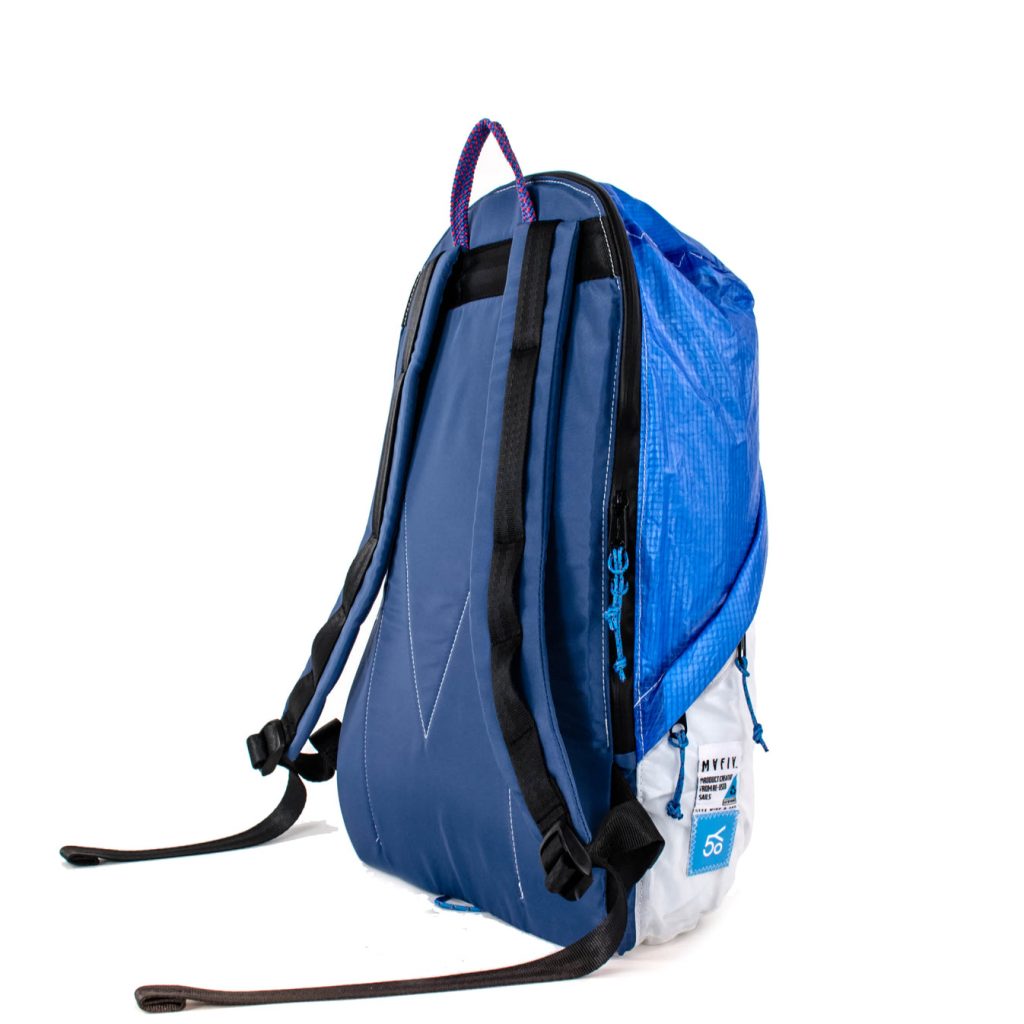
Deep Blue Bag by Yves Behar for MAFIA
Being a surfer and an ocean-lover, Béhar has designed a one-of-a-kind bag full of unique and functional features, that also carries his trademark streamlined sculptural design aesthetic.
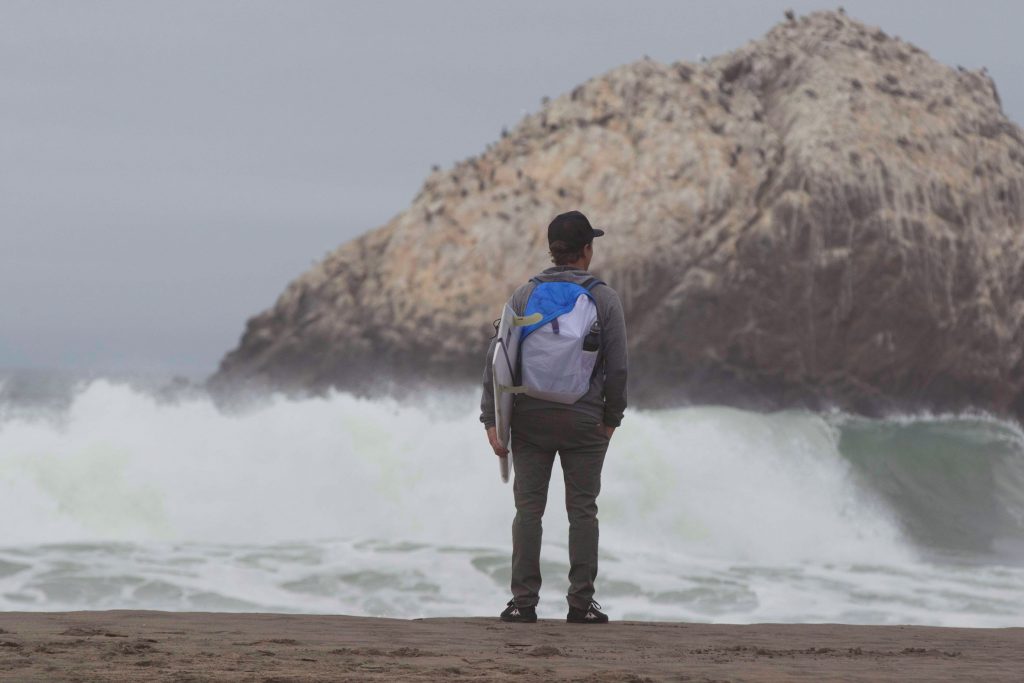
Deep Blue Bag by Yves Behar for MAFIA
The rucksack is designed to promote sustainable design alternatives, as each bag saves one square metre of material from landfill waste. The list of materials includes lightweight spinnaker sails, seatbelts, kite sails, used wetsuits, and climbing ropes from Yosemite’s El Capitan for the handles and detailing.
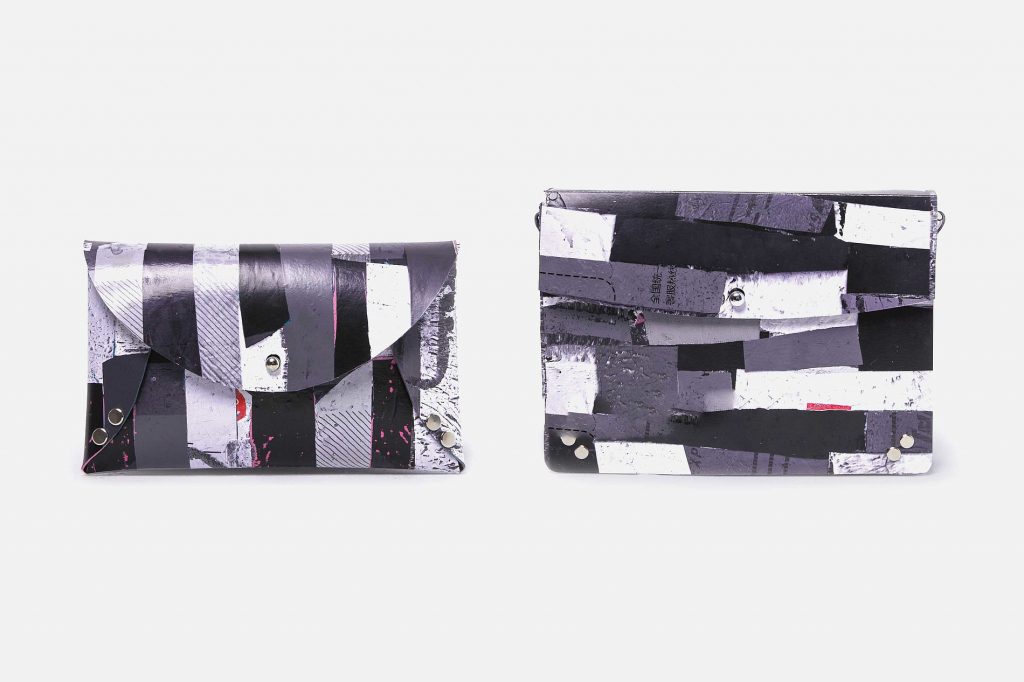
re: Express Plastic to Bag by Huang Huizhen, Su Yunpei, Tang Weikun, Xiao Kaixu (also header image)
With the development of online shopping and deliveries, the constantly growing amount of plastic packaging waste threatens to question all progress made with reducing the amount of plastic bags being used in shopping and groceries. To address this problem, the design team from Beijing Institute of Fashion Technology, China, experimented with better ways of recycling polymer mailer bags and transforming them into a new surface material through simple processing or pattern design.
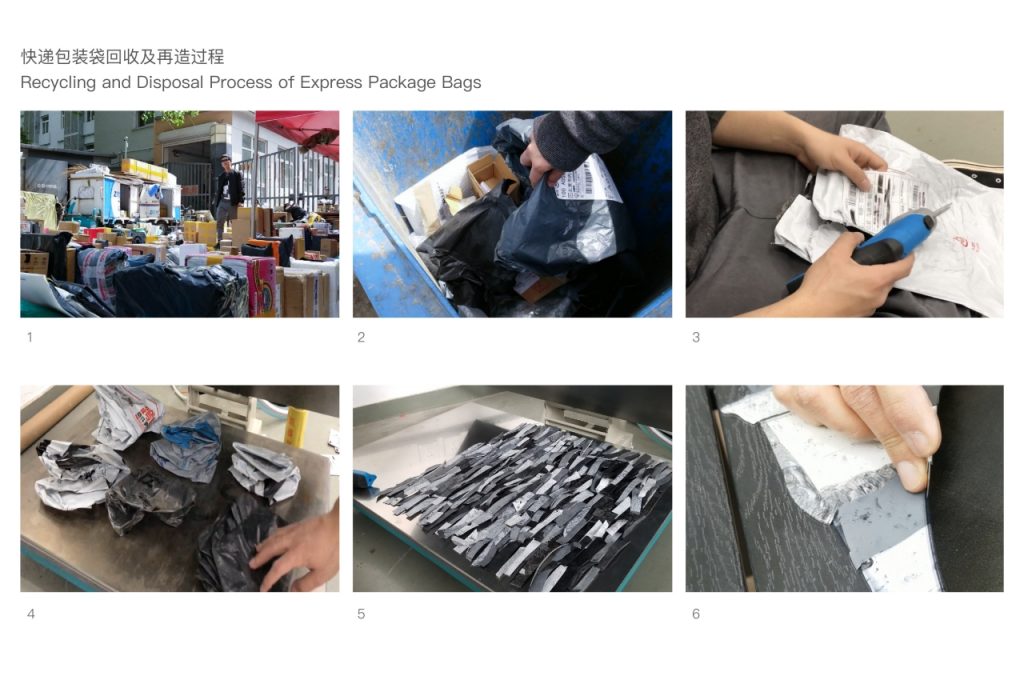
re: Express Plastic to Bag by Huang Huizhen, Su Yunpei, Tang Weikun, Xiao Kaixu
Developed by Huang Huizhen, Su Yunpei, Tang Weikun and Xiao Kaixu, “Re: Express Plastic to Bag” is an attempt to use the varying colors and patterns of packaging plastic as a strength rather than the material’s weakness. After removing potentially private information on labels, plastic pieces of used packaging are compressed and heated to become more pliable materials that can be cut into strips. These strips are then laid out flat and once again baked to be hard enough to be used for making bags.
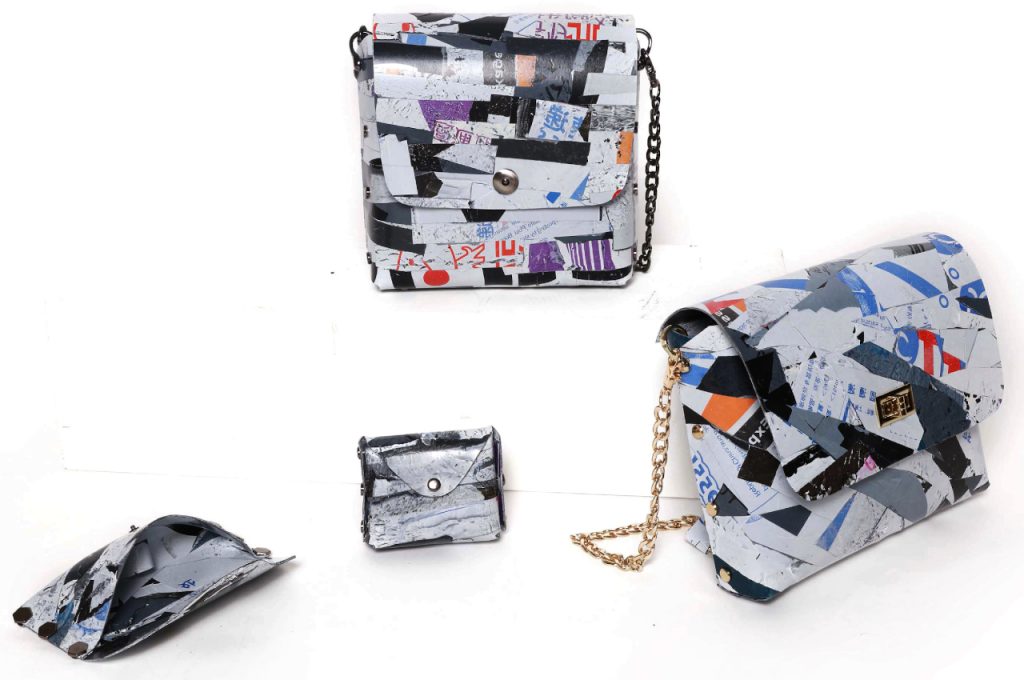
re: Express Plastic to Bag by Huang Huizhen, Su Yunpei, Tang Weikun, Xiao Kaixu
The regenerated material created our of the plastic packaging can then be used to produce various products, such as fashionable bag designs. The material is highly flexible and wear-resistant, with a texture that resembles vegetable tanned leather. In a bag design, it can be applied to almost every part of the bag body, making it possible to create a bag from a single sheet with no stitches.
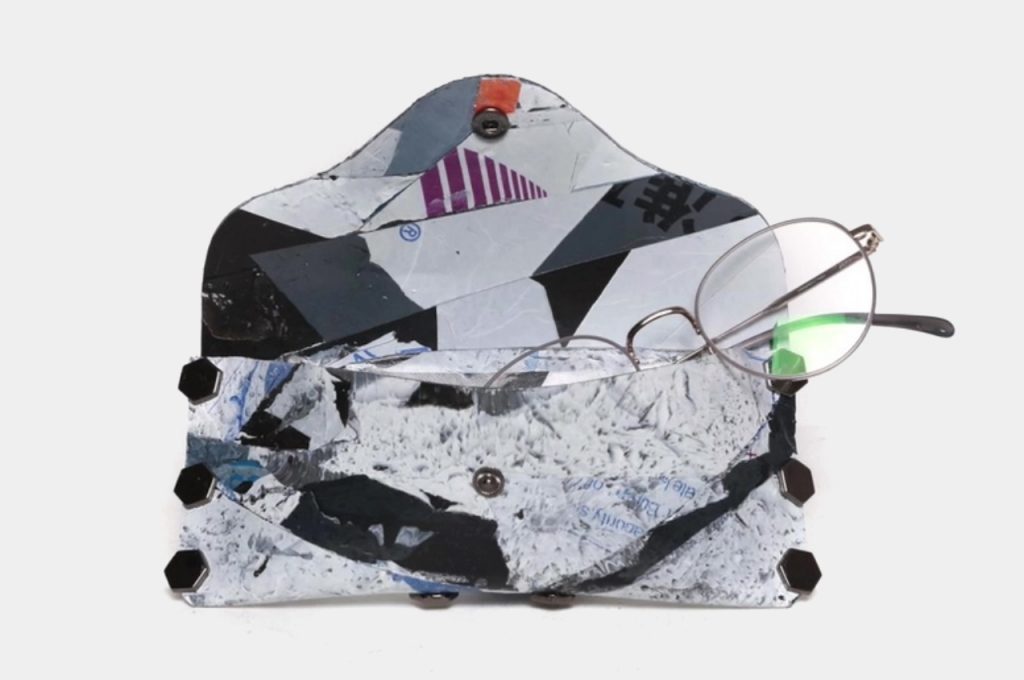
re: Express Plastic to Bag by Huang Huizhen, Su Yunpei, Tang Weikun, Xiao Kaixu
The product’s durability is improved by using a modular design that allows for easy disassembly or replacement of damaged parts.
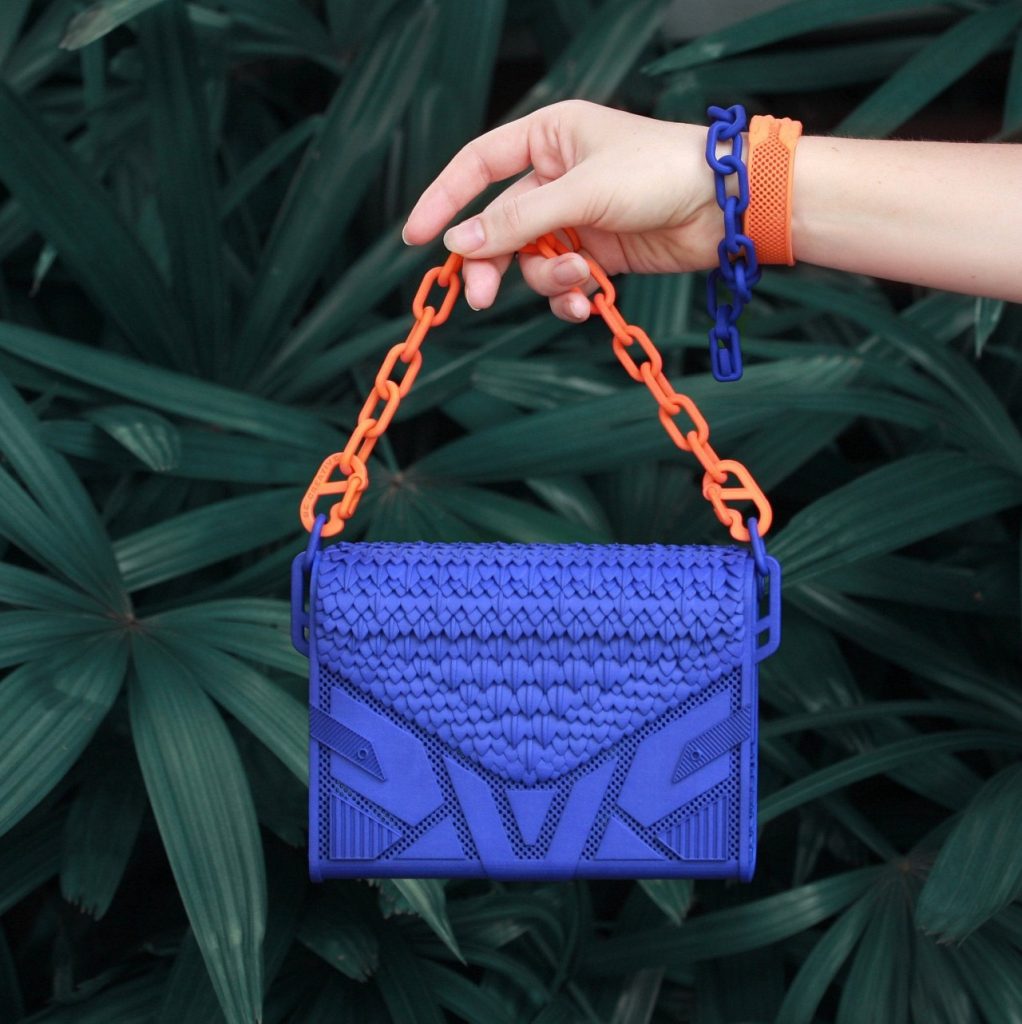
Reusable Bag by Malinko Design
Rather aptly dubbed the Reusable Bag, this 3D-printed handbag from Malinko Design similarly can be easily fixed in case of damage, allowing you to use the bag for years to come. The thing is each Reusable Bag is made using 3D printing technologies, so when the bag gets damaged, it can easily be repaired with a little heat, filament, and sandpaper. Besides, the nylon used for the handbag’s production can be pulverized and converted into a filament and reused to 3D print other products, encouraging a circular economy. Besides, the bag’s plastic construction is waterproof and much more durable than the average leather or fabric bag.
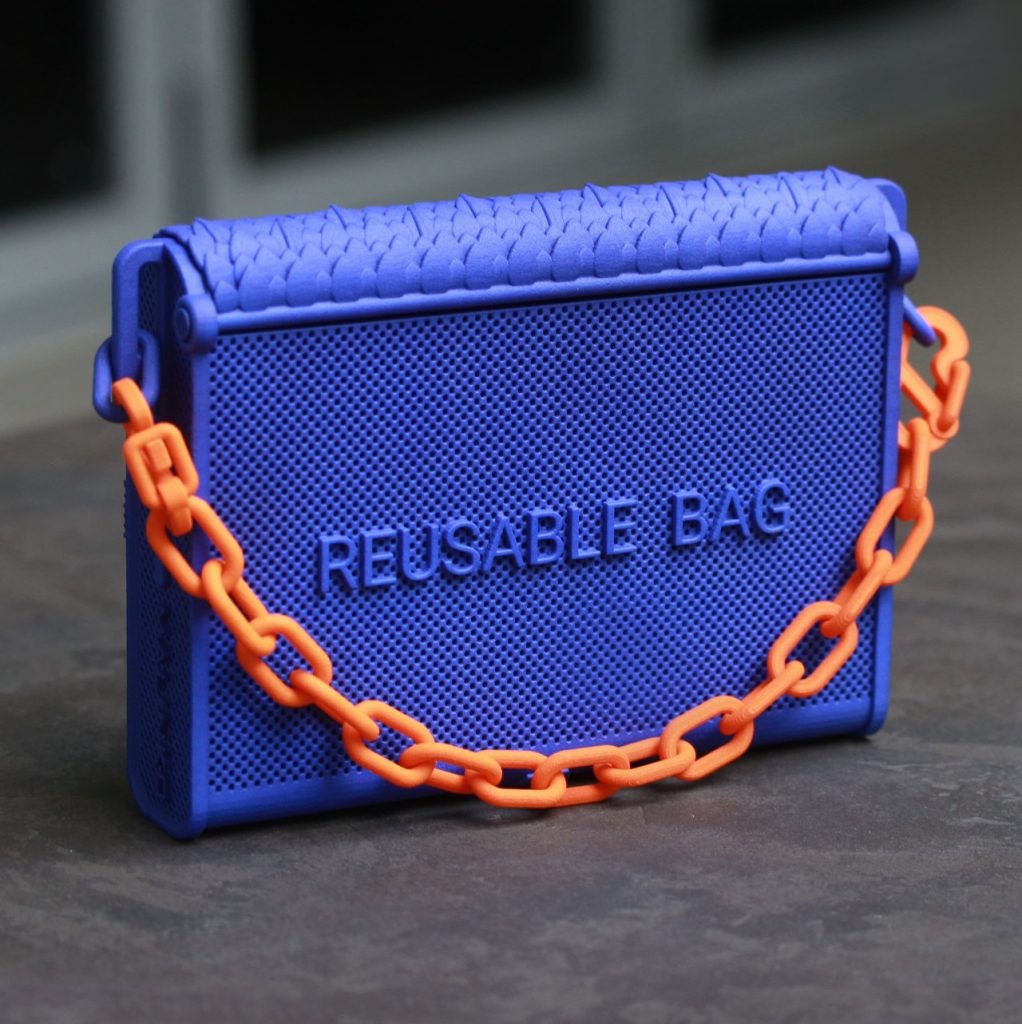
Reusable Bag by Malinko Design
The use of 3D printing also means that the manufacturing of the bag generates significantly less waste than regular leather and fabric production process.The bags are made to order too, reducing inventory, and take about 2 weeks to produce.
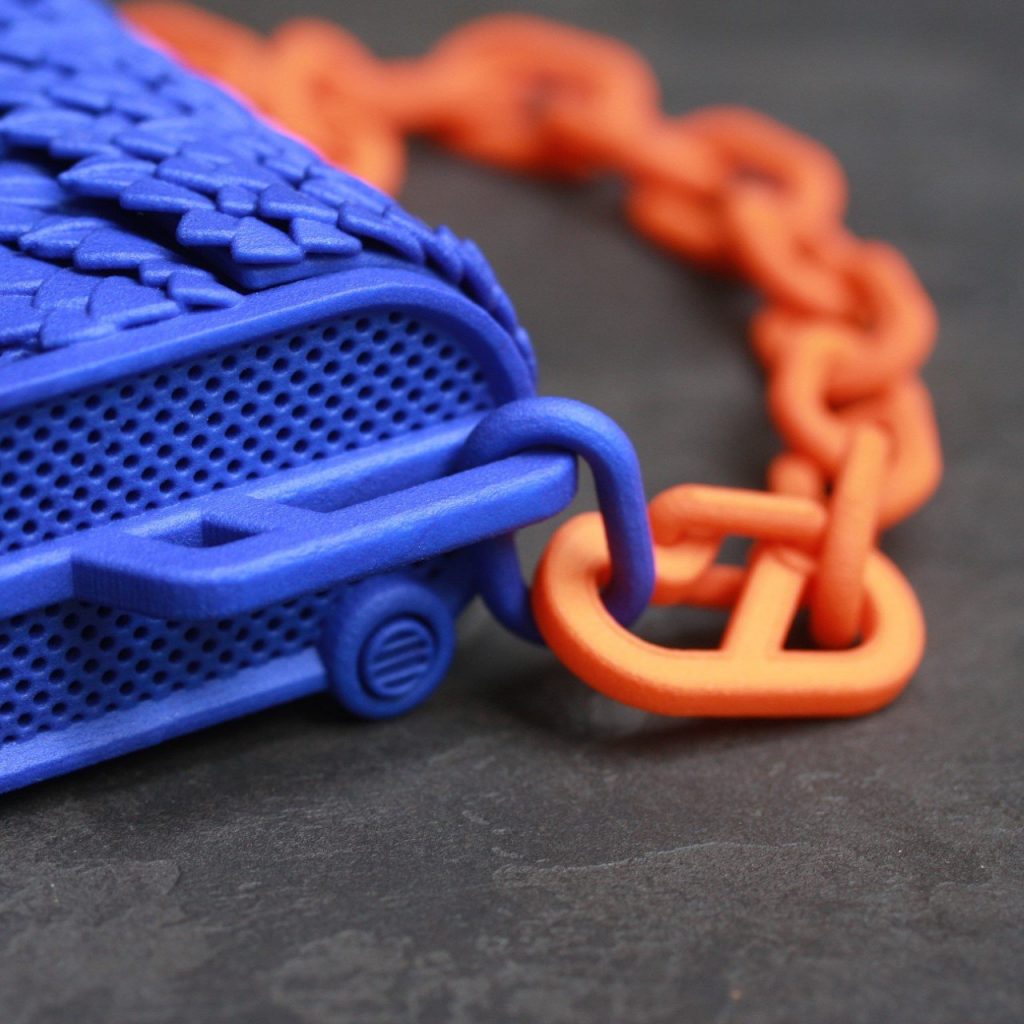
Reusable Bag by Malinko Design
The bag is as eye-catching as it is sustainable. It comes with a vibrant blue main body, and an orange chain-link strap that is sure to grab the attention of anyone who even glances in its general direction. It incorporates a variety of styles, including edgy paneling on the base, perforated strips, and a faux feather/scale design on the top.